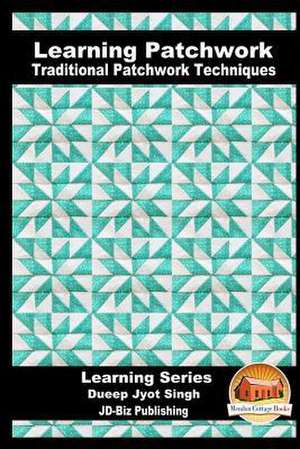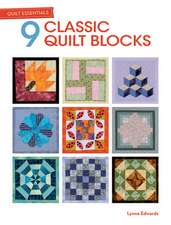Learning Patchwork - Traditional Patchwork Techniques
Autor Dueep Jyot Singh, John David Editat de Mendon Cottage Booksen Limba Engleză Paperback
Preț: 76.23 lei
Nou
Puncte Express: 114
Preț estimativ în valută:
14.59€ • 15.85$ • 12.26£
14.59€ • 15.85$ • 12.26£
Carte disponibilă
Livrare economică 31 martie-14 aprilie
Preluare comenzi: 021 569.72.76
Specificații
ISBN-13: 9781530696987
ISBN-10: 1530696984
Pagini: 54
Dimensiuni: 152 x 229 x 4 mm
Greutate: 0.11 kg
Editura: CreateSpace Independent Publishing Platform
ISBN-10: 1530696984
Pagini: 54
Dimensiuni: 152 x 229 x 4 mm
Greutate: 0.11 kg
Editura: CreateSpace Independent Publishing Platform



















![Kim Schaefer's Skinny Quilts: 15 Bed Runners, Table Toppers & Wallhangings [With Pattern(s)]](https://i4.books-express.ro/bt/9781607054399/kim-schaefer-s-skinny-quilts.jpg)
![Kim Schaefer's Calendar Runners: 12 Applique Projects with Bonus Place Mat & Napkin Designs [With Booklet and Pattern(s)]](https://i2.books-express.ro/bt/9781607055624/kim-schaefer-s-calendar-runners.jpg)